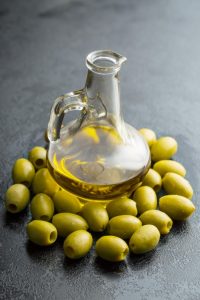Cannabidiol (commonly referred to as CBD) is one of 113 currently identified cannabinoids but can account for up to 40% of the plant’s extract. CBD extraction has been making headlines more and more as the years go on due to the promising results it can deliver. Most cannabis plants produce CBD naturally making it widely available, it can be found in:
- Marijuana (cannabis plants that contain psychoactive chemical THC)
- CBD cannabis plants (cannabis plants that contain more CBD than THC, such as CBD Mango Haze)
- Industrial hemp (cannabis plants that contain no THC)
Various methods can be used to extract CBD from cannabis, the most common use a type of solvent. You can use an oil solvent, liquid solvent or CO2 solvent for the extraction. Extracting CBD from THC cannabis usually is more complex and requires professional equipment, however extracting CBD from industrial hemp or CBD cannabis is relatively simple.
Oil Solvents
 Oils such as olive oil has been used to extract CBD from hemp and cannabis.
Oils such as olive oil has been used to extract CBD from hemp and cannabis.
To start the CBD extraction using an oil solvent you must first start decarboxylated the plant material or heat it to a specific temperature for a certain amount of time to activate chemicals within the plant.
Olive oil can’t be evaporated after this method so when using you must consume more of this oil than highly concentrated oils produced by the other methods. CBD olive oil is highly perishable so it must be stored in a dark, cool place.
This method is a great, cheap way to produce CBD at home but is not useful for commercial businesses and companies.
CO2 Extraction
Carbon Dioxide can be a useful tool when extracting CBD from cannabis plant material, since it can be any state of matter depending on the pressure and temperature of it. This method is usually performed with a closed-loop extractor (more specifically supercritical fluid extraction).
To start a CO2 extraction you must pump dry ice from your fist chamber into your second chamber which contains the plan material. The dry ice is under the correct temperature and pressure to allow it to extract the chemicals and flavours. The CO2-cannabis concoction is then pumped into third and final chamber with a lower pressure and higher temperature so the CO2 rises leaving behind the CBD material ready for consumption.
This method can also be used with specific temperatures and pressures to isolate certain compounds within the cannabis plant material.
Since this CBD extraction method uses expensive equipment, doesn’t have a long evaporation process, and has very little risk of finished product contaminants, it is often used by commercial businesses and companies vs hobbyists.
Liquid Solvents
This CBD extraction method is very similar to the CO2 method however it uses a different solvent such as butane, isopropyl alcohol, ethanol, or hexane. Once you’ve decided on a solvent you simply run it through the plant matter to strip it of the cannabinoids and flavours. The liquid solvent will eventually evaporate from the mixture leaving only a concentrated oil of chemicals and flavours.
Some downsides associated with this method depends on the solvent you choose, as certain solvents can remove chlorophyll from the plant material or leave trades of impurities.
The cannabis landscape is always evolving and new techniques are constantly being discovered, do you have a new way of extracting CBD from cannabis? Leave us a comment!
 Straindex
Straindex